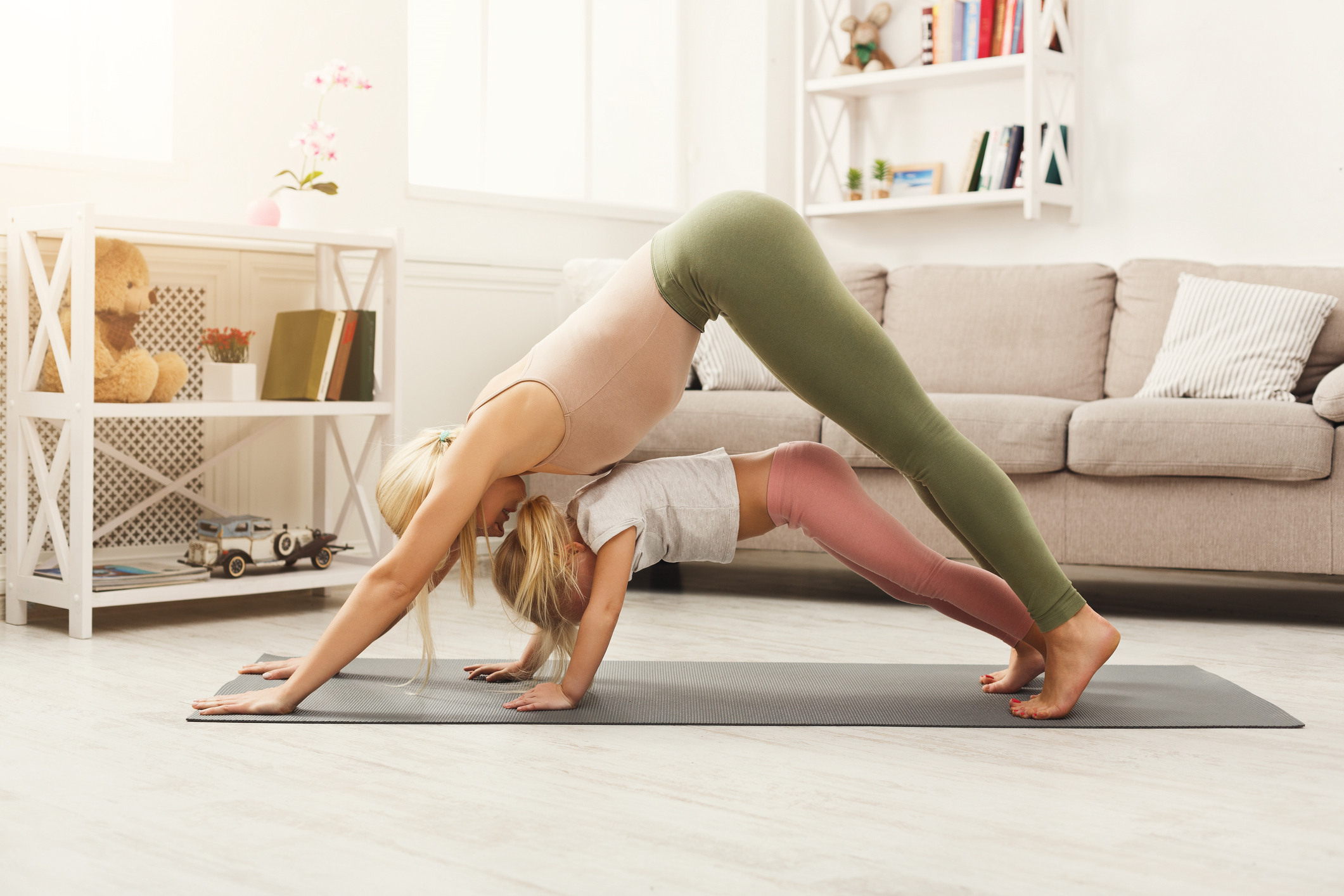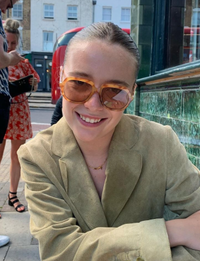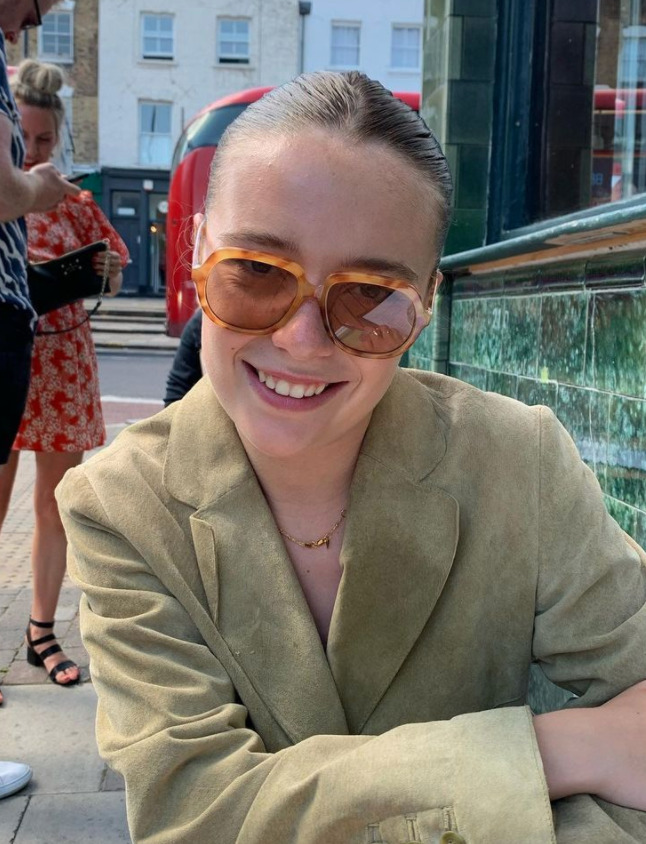Types of yoga: 5 to try that promise to boost both your physical and mental health
Whether you’re a fully-fledged yogi or need help getting off the starting blocks, practicing from studio or home.


Whether you’re a fully-fledged yogi or need help getting off the starting blocks, practicing from studio or home.
Sometimes it can feel super overwhelming knowing which yoga class to pick. Maybe you're used to the dynamic speed of a vinyasa class and fancy something different, or maybe you've never actually tried yoga and have only ever heard of yin. Whatever point of your yoga journey you're at - and if trying more yoga was one of your goals for 2022 - here, some of the UK's top yogis explain the different types of yoga.
Before we delve into the Asanas, Pranayama, and Dhyana (that's the all-important meditation, FYI) that make up the different yoga styles, let's break down what yoga is, in it's simplest sense.
“The literal definition of yoga is to unite: it’s about uniting oneself with one’s mind," explains Angie Tiwari, founder of Tiwari Yoga. "One of the elements of yoga is the poses, but there is so much more to it.”
“The physical side is known as Asana, then there is Pranayama, otherwise known as breathwork," she shares (read our guide to breathwork training, here).
After that, she goes on to add, you have meditation and the wider philosophical and spiritual side of yoga. “Once people realise that yoga is such a rich topic, they can tailor their practice for themselves," she goes on.
One of the easiest ways to get into yoga is to immerse yourself in classes, whether you try them at home or in the gym. Whatever you choose, here’s our round-up of the most common types of yoga, explained by the experts.
Celebrity news, beauty, fashion advice, and fascinating features, delivered straight to your inbox!
Types of yoga: 5 to know about, according to the experts
1. Vinyasa yoga
Vinyasa is an umbrella term and simply means the action of connecting breath with movement. (This is why you see this word come up time and time again when you're signing up for a class). This type of yoga is based on a sequence of dynamic movements that you move through in a continuous flow that stretches your entire body.
Shruti Srivastava, the brains behind Yoga Mapp, an online platform that hosts a wide range of digital yoga, breathwork, and meditation classes, explains: “Vinyasa flow is a creative practice where teachers are able to create their own flows while staying connected to the breath. The unexpected element of practising different postures while knowing that you have to flow smoothly with your breath is what makes it fun.”
Try a Vinyasa class:
2. Hatha yoga
Keen yogi but still a little clueless? Hatha may be for you. Not sure what it actually is? “Hatha is a great foundation to learn as it forms the basis of many other yoga styles (like ashtanga and power yoga)," shares Felicity Wood, yoga teacher who's been teaching Hatha since 2014.
"The steadier pace and attention to detail that characterises this style means it’s accessible for everyone,” she goes on.
This class is made up of seated and standing poses as well as bends, twists, balances, and inversions. You can expect the flow to sit somewhere between the dynamic pace of vinyasa and the pausing, static, style of yin. Fun fact: originally, Hatha was more focused on breathwork, but nowadays it's all about deep stretching and making sure your entire body is working in harmony.
Wood explains: “I always work from the floor upwards. From the arches of my feet, to the legs, the spine, the arms, and the head, we have to be aware of every muscle."
Try a Hatha class:
3. Yin
You'll likely have heard of Yin yoga- it's one of the most common types of yoga. In a nutshell, it's all about nailing poses and correcting your alignment, but it's also a calmer, more soothing, meditation-focused flow.
“Yin is based on ancient Chinese medicine and energy pathways,” starts Puravi Joshi, creator of Mysa London, a shop for inclusive yoga resources (including a 54-card deck that explains the meaning behind the purpose and meaning of each asana). They explain: “When one of these pathways - or meridians - gets blocked, yin helps to release the trauma and stress.”
Classes consist of poses that you hold for between three and ten minutes. Usually focused on the lower body, you’ll be testing your strength and stamina. Puravi says: “This type of yoga really works your deep connective tissues and provides a more intense stretch. It encourages a deeper meditative state.”
Try a yin class:
4. Ashtanga
Not only is Shruti Srivastava an expert in vinyasa, but she's also an Ashtanga yogi, too. She says: “This style is a very disciplined and physical practice that is perfect for when you want to feel energised and strong.” It's a more rigorous workout than Yin, Hatha or Vinyasa and is bound to challenge your stamina, flexibility, and strength., she shares.
Fun fact: Ashtanga is Sanskrit and translates to "eight limbs" and true to its name engages your whole body.
Less literally, this practice has its roots in the eight branches of yoga philosophy that include morals, self-discipline, and concentration.
Srivastava explains what a class might look like, saying: “You typically practice the same poses every time and the teacher counts in Sanskrit which helps focus the mind. Each posture is typically held for five breaths,” she adds. "There are postures such as Crow pose - Bakasana - which require you to look forward. Otherwise, quite simply, you will face plant."
Try a Ashtanga class:
5. Mandala
And finally, Mandala - a newer type of yoga. To really understand a Mandala flow, it’s useful to understand exactly where it comes from. Mandala is a Sanskrit word that translates to "circle" or "centre", and is further the term used to describe objects made from geometric shapes that act as a ritual symbol for the Earth.
“Mandala is a new form of yoga that is connected to the Mayan calendar,” explains Katarina Rayburn founder of Kindred Yoga, a London-based studio that offers online and in-person training and retreats. She continues: “It's based on repetitive circular patterns where you move around the mat in full 360 movements rather than thinking of your mat as a straight line.”
As with all Vinyasa, mandala is all about moving through motions whilst connecting them with your breath. The pace of the flow depends on the teacher but one thing's for certain: this class requires more of your attention, which means your mind is stretched as well as your body.
Instead of thinking of the back and front of your mat (our guide to the best yoga mats will help you choose the right one for you), you're constantly switching things up, which will challenge even the most experienced yogis. That's all part of the fun. As with any practice, give it time and you’ll be a Mandala master.
Try an Ashtanga class:
Grace Warn is the at Commercial Producer & Writer Marie Claire UK. From organising cover shoots and uncovering the latest news to creating social content, she loves the fact that no one day is the same!
Growing up just outside of London, Grace made the leap at 16 and started to intern. Juggling education, earning money, styling, producing and organising numerous fashion cupboards was as intoxicating as it was challenging and it's what's brought her here today.
After graduating in the pandemic, the only option was to take on as many freelance roles as possible. From demystifying health jargon to keeping up with the latest footwear drops, a strange concoction of health and footwear journalism became Grace's bread and butter but she always wanted a break in lifestyle journalism and production. Then she landed her dream role!
When she's not racing to deadlines, Grace can be found on anything that could pass as a dancefloor dancing to Diana Ross or scouting out vintage sales on the outskirts out South London - believe it or not, Beckenham is the place to go!
